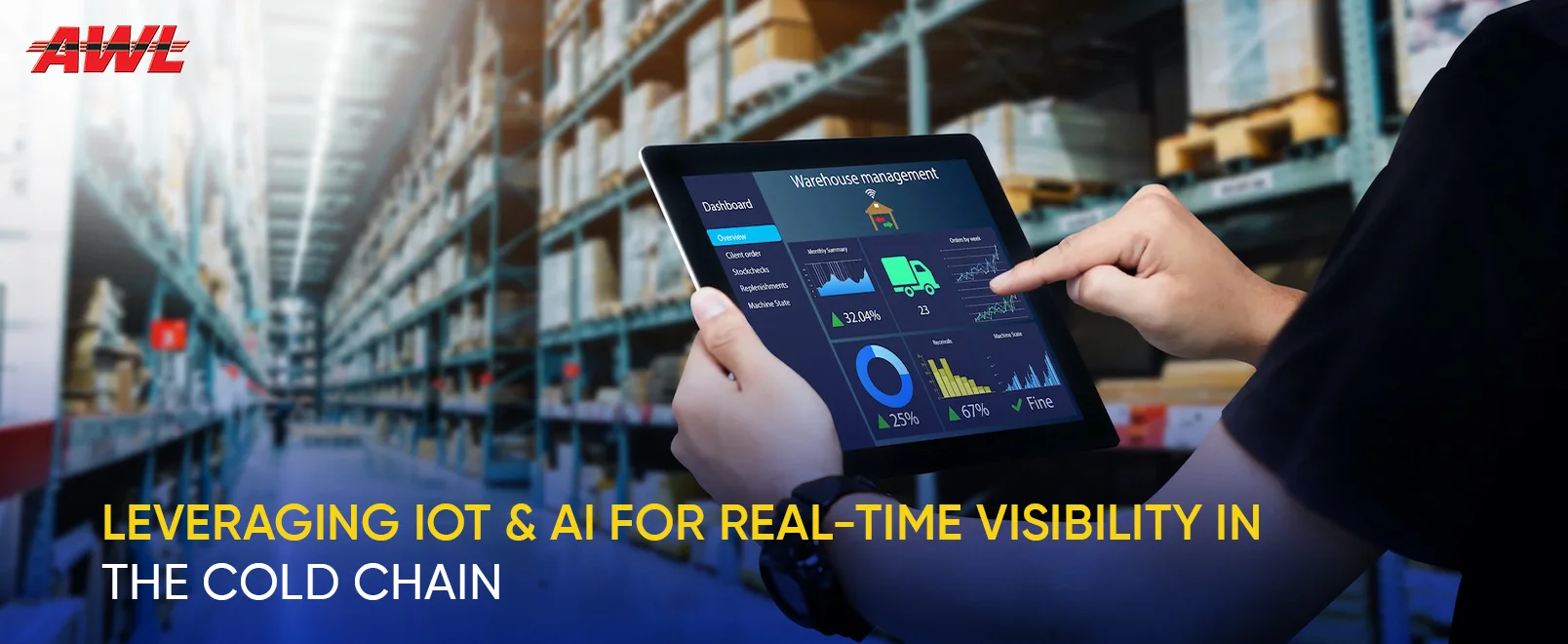

The cold chain is one of the most sensitive parts of the supply chain. It concerns food, medicine, and vaccines that need to be kept within a particular temperature range. Even minor delays or alterations in temperature can cause major losses. This explains why cold chain companies are now getting into intelligent technologies such as IoT and AI.
Goods can be tracked in real time with the help of smart tools. They give updates on location, temperature, and even humidity. This helps reduce waste, save costs, and keep quality high. For cold chain companies in India, this is a big step forward. Let’s discuss what IoT and AI can do together to make the cold chain run more efficiently and quickly.
What Is IoT and How Does It Help?
The Internet of Things or simply IoT is an infrastructure of intelligent devices capable of communicating with one another. Such equipment has sensors that gather and transmit information. These sensors are implemented in the cold chain logistics sphere to monitor the status of the goods throughout the distribution channel to the final consumer.
For example, an IoT sensor in a cold storage box has the ability to send real-time updates regarding temperature. The system indicates an alarm in case it is really hot or cold. This enables employees to respond quickly and correct the situation before the products are spoiled. It is similar to having an eye on all products at all stages of the journey.
The Role of AI in Smart Cold Chains
Artificial Intelligence, also known as AI, assists in making sense out of all the massive data generated by IoT devices. It analyses trends, detects problems early and may even forecast future problems. When combined with AI, IoT provides a complete view of goods distribution in cold chain companies.
To give an example, an alternate route that leads to frequent delays may be realigned by AI. When a storage unit is experiencing problems, AI can warn the staff when it is on the brink of failure. This assists in maintaining the safety of products and saves money and time.
Real-Time Visibility: A Game Changer
In the past, many cold chain logistics systems worked on guesswork. By the time a problem had been discovered, it was already too late to correct. However, in the case of IoT and AI, real-time visibility can be achieved.
Suppose a vaccine delivery is headed to a clinic. With IoT and AI, you will know where it is, what temperature it is in now, and how much time it will take to reach. If the vehicle gets stuck in traffic or the cooling system fails, alerts go out at once. This helps teams take action and save the shipment.
Real-time visibility also builds trust. Clients can track their goods and feel confident that they will arrive safely. This is key for cold chain companies that want to stay ahead in a fast-changing market.
Better Planning and Lower Costs
Smart cold chains do more than just track goods. They help with planning, too. AI tools can study past data and show which routes are the fastest or safest. They can also flag drivers or trucks that often cause delays.
This helps managers make better choices. They can plan routes that save fuel and time. They can also avoid areas that may cause risk to goods. In short, smart planning leads to smooth operations.
This also means lower costs. Less waste, fewer delays, and better use of staff and trucks all help cut down spending. Over time, this can lead to big savings for cold chain companies.
Keeping Quality High in Cold Chain Logistics
Product quality is the heart of the cold chain logistics process. When shipping perishable goods, every degree counts. IoT sensors keep a close eye on the goods and ensure they stay within the safe zone.
If something goes wrong, alerts are sent to the control room at once. Staff can stop the trip, shift the goods, or adjust the cooling system. This keeps the goods fresh and safe for the end user.
With this level of care, cold chain companies can meet even the strictest quality rules. This is very important in the food and pharma industries, where health and safety come first.
How Warehousing Gets Smarter
Smart cold chains don’t stop on the road. They also include warehousing companies in India that use IoT and AI. In smart warehouses, sensors track not just temperature but also stock levels and expiry dates.
AI helps plan where to keep each item based on how often it moves. This helps cut down on waste and makes sure old stock is used first. When a product is about to expire, alerts can remind staff to move it soon.
This kind of tech makes supply chain process management smoother. It also ensures that every part of the journey, from storage to delivery, is covered.
Cold Chain in India: A Growing Market
India is seeing a boom in food delivery, pharma, and vaccine needs. This has made cold chain companies in India more important than ever. But with growth comes new challenges.
India’s roads and weather can be tough on cold chain systems. IoT and AI offer a way to handle these issues. With smart tools, companies can track their goods every step of the way, no matter the conditions.
Also, as rules on food and drug safety get stricter, real-time data is now a must. It helps companies show proof that their goods were handled correctly. This can be a strong edge in the market.
AWL India: Driving Innovation in Cold Chain
As one of the trusted cold chain companies, AWL India is leading the way in using smart tech. With a focus on speed, safety, and smart systems, AWL India blends IoT and AI into its services.
AWL’s smart cold chain solutions help clients track goods live, plan better, and cut costs. Their systems offer full support from warehousing to delivery. This end-to-end model makes sure that products are fresh and safe at every point.
For those looking to work with top warehousing companies in India or want to improve supply chain process management, AWL India is a name to trust.
Conclusion
IoT and AI are no longer just future ideas. They are tools that cold chain companies can use today to solve real problems. From tracking goods in real time to predicting issues before they happen, smart cold chains are here to stay.
As demand for fast, fresh, and safe delivery grows, companies must adapt. With the right mix of tech and teamwork, the cold chain can become stronger, faster, and smarter. AWL India is already showing how this can be done, setting the pace for others in the field.
The future of the cold chain is clear, and it’s smart, connected, and ready for the road ahead.

David Williams
Team Leader